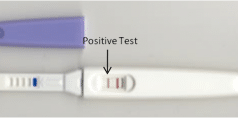
The emergence of the COVID-19 pandemic has tested the healthcare industry vigorously over the past two years but the trying times has seen new technologies rolled out rapidly to cope with the changing landscape.
It has forced all kinds of medical personnel to embrace technology and investigate new technologies to revolutionize their working lives – no matter how difficult it might have been to try. So what could be the new emerging trends that technology and computers could provide the healthcare industry moving into 2022?
Managing Telehealth
Rather than all patients physically attending GP or hospital appointments, many have had to switch to having a telehealth appointment instead.
By using apps such as FaceTime or Zoom to conduct appointments, it has allowed patients and medical personnel to still function without leaving their homes in a lockdown situation.
For medical personnel too, it has allowed them to continue managing their schedules whilst minimizing the risk of exposure to COVID when possible.
It’s a practice that won’t disappear anytime soon as telehealth appointments can still play a vital role in modern medicine. Patients and doctors can use medical apps on smartphones to share data and results in real-time and discuss progress on certain medical issues.
As healthcare apps are almost now standard features on iOS and Android platforms, it will become easier for information to be shared between patients and doctors accurately and allow for more precise diagnosis and treatments.
Online Pharmacies
Sometimes, it’s difficult to get medicine or prescriptions processed if your child is sick late at night or you live in remote areas.
However, the arrival of online pharmacies has eliminated that issue for people who are in need at a time like that and access medicine in times of need.
Online pharmacies are only set to grow further and their ability to allow access to medicine 24/7 or even get medicine delivered to your doorstep will make healthcare accessible to those in need both in rural communities or who don’t have the chance to get to the chemist before they close.
3D Printing Evolution
As 3D printing has become standard across many industries, it has slowly but surely transformed the health industry in designing implants and even new organs.
The newest innovations involve taking the biological data of a patient and designing new organs or parts that are custom-made for their actual body and the dilemma they are faced with.
Although the cost of making custom parts are still quite high in many parts of the world, the ability to make individual and customized items for a patient could significantly increase the impact of how quick doctors can treat patients with an improved long-term prognosis.
Automatic Diagnostics
With so much medical data readily accessible online, there is more potential than ever before for someone feeling unwell to diagnose themselves without physically seeing a doctor.
Instead, using an automated diagnostic system could prove to be the way forward saving GP’s and specialists time and giving them more chance to focus on urgent emergencies.
Having an automated system does run the risk of misdiagnosis should someone enter the wrong symptoms or if they are not clear on their symptoms.
However, the technology is ever-involving and becoming more accessible to allow people suffering from common ailments such as colds or cases of flu to get a quick diagnosis without stepping foot into a doctor’s surgery.
Treading The Fine Line
As always, evolving technologies will always take a little while to eliminate their flaws and be cheaper to run as they are used more frequently.
However, the growing autonomy that technology is providing healthcare professionals allows patients access to treatment faster and easier at a time where both the industry and the world itself slowly embrace the new normal and the trends that emerge from it.








